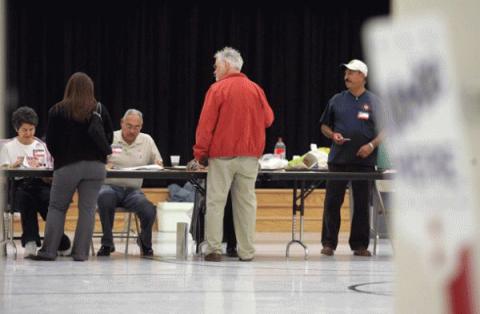Texas has an open primary, but many people like to refer to it more as a semi-open primary. Voters don’t have to declare a party when they register to vote. They do, however, have to declare a party for the year if they want to vote in that year’s primary elections. Once a person chooses a party they cannot vote across party lines and, in the event of a runoff, they have to stick with the party.
The current method in Texas strongly favors a two sided system. Texas is decidedly a partisan state, and not just because it is a red state. Things are either Republican or Democrat and there is very little room in between or outside this. Independents have to pick a side if they want to participate in the primaries or they could choose not to vote in either party’s election. Voters could hold out in hopes that there is a third party candidate they could help get on the general election ballot.
In 2010, Libertarian candidates could win as much as 3% in any statewide election. They took 10.5% in the Comptroller’s race and the Green Party took 6.3%, but there wasn’t a Democratic candidate. Since both third parties did so well in a statewide election they were allowed ballot access in the 2012 general election, which means candidates could petition to be on the election ballot in November in those parties.
The number of independent voters has increased since the last presidential election, but most voters in the state, like everywhere else, vote with a lesser of the two evils mentality so it is hard to say conclusively how many registered voters in Texas are independent.
The voter turnout in the 2012 Texas primaries and the runoff elections was awful to say the very least. Approximately 11.66% of eligible voters in Texas participated in either the Republican or Democratic primary elections. Just over 71% of voters are registered so the percentage of registered voters that turned out was about 16.33%.
The percentage of voters that participated in the state primaries was close to half the number that voted in the 2008 primaries. The number of Republicans rose only slightly from four years ago, and the numbers for the Democratic Party plummeted from 22.54% of registered voters to 5% this year, which is 3.6% of the voting age population.
This means that a Republican candidate in a statewide race only needed roughly 5.76% of registered voters to win their election without the need for a runoff. The magic number for Democrats was 2.57%. Now, the results for each race were different so that number could vary a bit from race-to-race.
The general rule of thumb for runoff elections is take the number of voters that voted in the primaries and cut it in half. The turnout for the Republican runoff elections was actually higher than many people expected. Of the voting population that is registered to vote, 8.5% voted in the GOP Senate race.
Texas is solidly a Republican state. The winner of the GOP Senate race will, more than likely, win in the general election. Realistically, no one is giving the Democratic nominee, Paul Sadler, much of a chance. The same applies to any Democratic candidate in statewide races though certain counties, Texas House and congressional districts do go blue every election, but statewide races will stay Republican this election cycle and it will be a while before there is any chance of that changing.
The most accurate metaphor I’ve heard to describe Paul Sadler is he is the “necessary sacrificial lamb” to the GOP.
The point is, Ted Cruz won the Republican nomination for the Senate race with just under 57% of the vote. That means he secured not only the GOP nomination, but pretty much the Senate race with 3.45% of the state population that is eligible to vote and 4.83% of registered voters. The lack of voter participation in Texas and what that truly means is evident in the Senate race.
Voters turnout is indicative of the current mood of the electorate. Many voters need to be motivated to participate and motivation is driven by perception. Motivation is driven by how voters perceive the election and their government. The media helps shape public perception in this country so if it is not important to the media then it is not important to the public.
Presidential races always have the highest voter turnout because the media focuses a significantly higher amount of attention on the race. Major media outlets typically do not do extensive reporting on congressional races or state and local races. As a result, voters are not that informed and don’t realize just how important these races are.
In a state like Texas, the primaries are so late in the election season that voter turnout during a presidential election year is not going to be very high unless there is a heavily contested presidential race like there was in 2008. At least, on the Democratic side. John McCain had already secured the nomination by the Texas primary.
Even news affiliates and stations in Texas don’t really cover local and state races that well. The GOP Senate race got the most attention because it was considered the most newsworthy. The major media markets in the state were flooded with attack ads and the race became very heated. However, no one is really emphasizing how important primaries are to the democratic process.
Check back to IVN for a report on voter turnout in the primary election season nationwide and how it compares to 2008.

